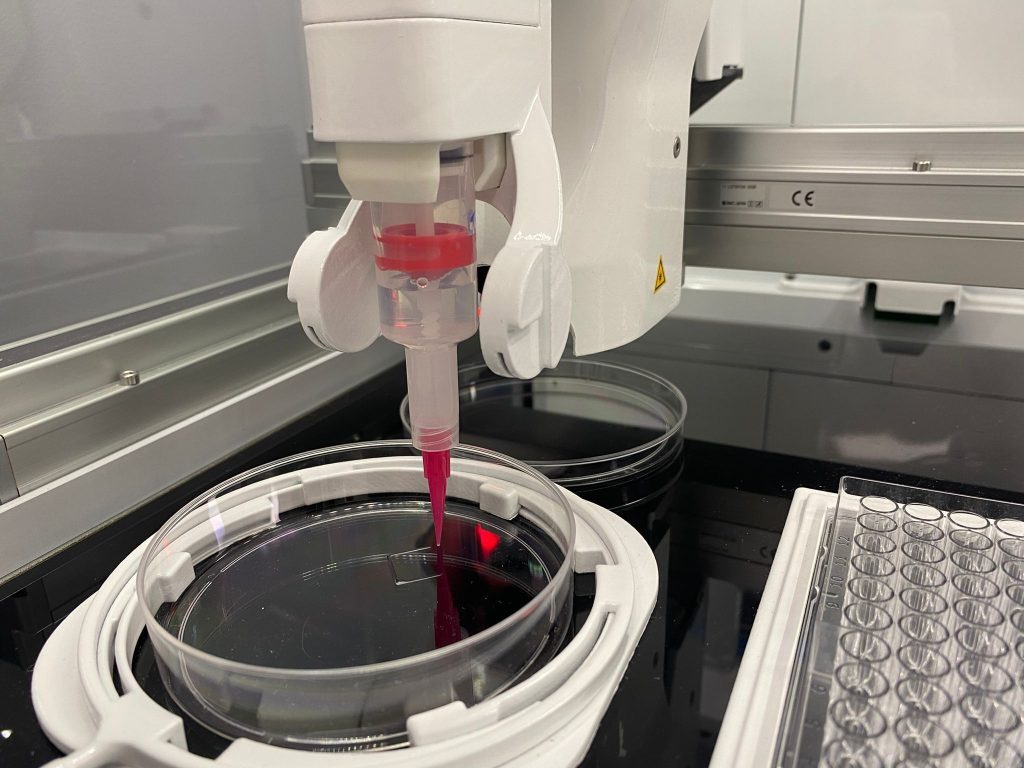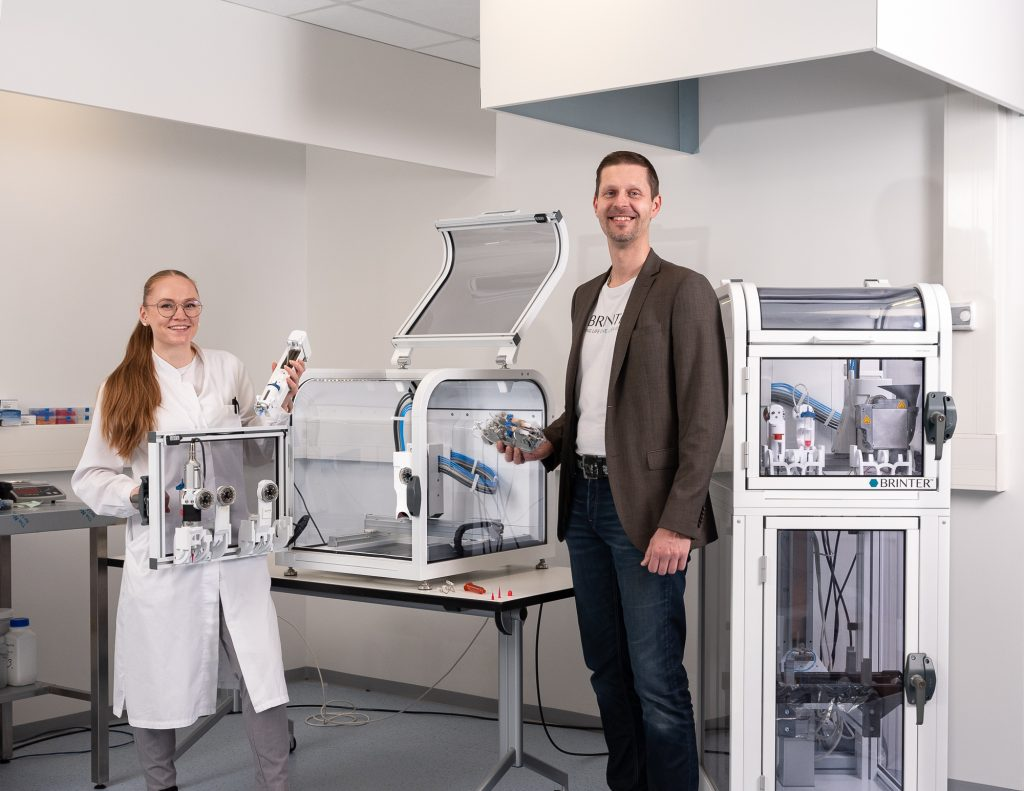Finland-based bioprinting firm Brinter, together with extrusion technology developer Puredyne, has announced the launch of its new Visco Bio printhead for use with its 3D bioprinters.
Owing to a new dispensing geometry, the modular printhead is able to extrude a more precise and constant volume per revolution, which allows it to achieve almost zero dead volume. As such, customers can expect to drastically slash costly medical-grade material waste to minimal levels.
The Visco Bio printhead is compatible with Brinter 3D bioprinters, while the technology was provided by Puredyne.
Felix Gruber, Business Development Manager at Puredyne, said, “Brinter is an innovative and strong partner for us, with whom we already have had a close relationship for some years. The Puredyne print head with its involved progressive cavity technology enables a totally new precision in extrusion-based bioprinting. Moreover, our solution gives the operator the required process and material flexibility in the handling of low to high viscosity biomaterials.”

Brinter and 3D bioprinting
Founded in 2020 as a spin-out from 3D printing service bureau 3DTech Ltd, Brinter specializes in developing 3D bioprinters, modules, and inks for customers in the pharmaceutical, biotechnological, research, and cosmetics sectors. The company is currently active in over ten countries, including the USA, the UK, and Germany, with clients such as Nanoform, Johannes Gutenberg University of Mainz, the University of Oulu, University of Turku, Åbo Akademi, Tampere University, and the University of Helsinki.
Brinter’s debut bioprinter is the flagship Brinter One, which works by depositing layers of cell-laden hydrogels into oncological models and cancerous and cartilage microtissues. The multi-material device can 3D print both stiff and soft materials, while being portable enough to pack up and set up in a different lab in a matter of minutes.
More recently, the company also launched its new entry-level model, the Brinter Core. Developed with the aim of making bioprinting as accessible as possible, the Brinter Core is half the size and cost of its predecessor and is capable of fabricating complex, multi-material tissue structures.
Last year, Brinter also secured €1.2 million worth of seed funding to streamline its day-to-day operations and better address the US and European medical markets with its portfolio of bioprinting products.

The Visco Bio medical printhead
The Visco Bio printhead design aims to combine repeatability and precision in the printing process, while also allowing for more material diversity. Puredyne has developed the modular heads to use a single cartridge per material, so there shouldn’t be any issues with cross-contamination and a programmable suck-back feature will mean clean start and finish points.
The system will also make use of the company’s new disinfecting blue light module, which was debuted late last year. In essence, it enables the safe bioprinting of tissue models and drugs, while minimizing the need for dedicated cleanrooms. Brinter believes that the launch of the Visco Bio will help customers at research institutions and the pharmaceutical sector meet basic requirements towards Good Manufacturing Practices (GMP).
Tomi Kalpio, CEO of Brinter, adds, “The practical applications of the technology align with Brinter’s vision to improve our quality of life by shortening and enhancing the productivity of the scientific discovery process and bio-manufacturing. This pushes forward the ambition of printing human spare parts such as hearts and kidneys, as well as more personalized treatment through cancer research and drug testing.”


Leave A Comment